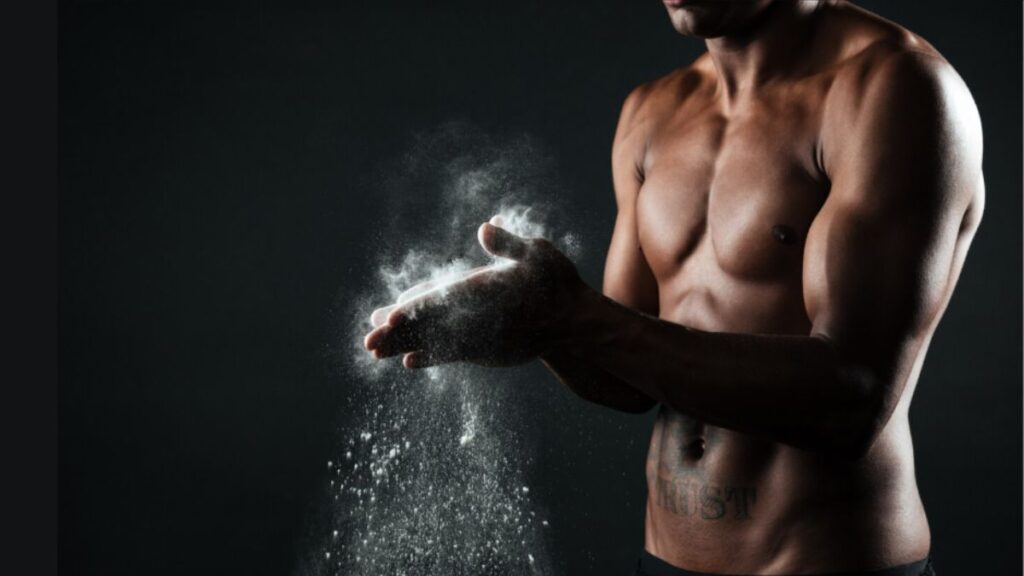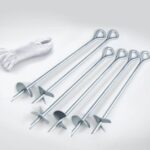Among all the equipment and accessories you’ll find in a gym, gym chalk might seem like a minor detail to the average person. But for those who regularly engage in intense physical training—like weightlifters, gymnasts, rock climbers, and CrossFit athletes—gym chalk plays a crucial role. Often underestimated, gym chalk enhances grip, reduces sweat, and helps improve overall performance by preventing slips and promoting safety during training. Its simple application offers tremendous benefits, especially when strength, balance, and precision are essential.
This comprehensive guide takes a closer look at everything related to gym chalk: what it is made of, how it works, why it’s so widely used in athletic training, and how to choose the right type for your needs. We’ll also explore its history, benefits, and some practical tips for using it correctly. Whether you’re a seasoned athlete or just starting your fitness journey, understanding gym chalk can make a real difference in your performance and safety.
What Is Gym Chalk?
Gym chalk, also commonly referred to as lifting chalk or climbing chalk, is a white powder used by athletes to improve their grip by drying out moisture on the hands. The main ingredient in gym chalk is magnesium carbonate, a compound that has excellent moisture-absorbing properties. Unlike regular classroom chalk, which is primarily made of calcium carbonate and used for writing on blackboards, gym chalk is designed to cling to the skin and reduce slippage caused by sweat.
When applied to the hands or even feet (in the case of climbers or gymnasts), gym chalk absorbs sweat and moisture quickly, creating a dry surface that allows for a firmer, more secure grip on bars, weights, or climbing holds. This reduces the risk of equipment slipping and minimizes injury while maximizing control.
Why Athletes Use Gym Chalk
The use of gym chalk’s is widespread across various sports for several important reasons. Athletes rely on their hands for power, precision, and balance. When the hands become sweaty, the grip weakens, and the risk of injury increases. This is especially true during deadlifts, snatches, pull-ups, or rope climbs where a strong and consistent hold is necessary.
One of the primary benefits of gym chalk is enhanced safety. A sweaty palm can cause a heavy barbell to slip or a gymnast to fall from a set of rings. Chalk provides the confidence to lift, hang, or swing without worrying about losing grip. It also increases friction between the skin and the equipment, improving control and reducing the amount of energy needed to maintain your hold.
Another significant benefit is performance enhancement. Athletes using gym chalk often report better lifting numbers, longer endurance in pull-up sets, and improved climbing ability. When the fear of slipping is removed, athletes can focus entirely on technique and strength.
Don’t stop here—take a look at what else we’ve got for you!
The Different Types of Gym Chalk
While gym chalk generally serves the same purpose, it is available in various forms, each catering to different preferences and environments. Understanding these types can help athletes select the most appropriate form for their training.
The most common types of gym chalk’s include:
| Type of Gym Chalk | Description | Best For |
|---|---|---|
| Block Chalk | Solid white bricks that can be broken apart by hand | Weightlifting, gymnastics, powerlifting |
| Loose Powder Chalk | Finely ground chalk, usually stored in a container or chalk bowl | Rock climbing, Olympic lifting, advanced users |
| Liquid Chalk | A mixture of chalk and alcohol that dries quickly after application | CrossFit, commercial gyms (less mess), indoor use |
| Chalk Balls | Mesh balls filled with powdered chalk, allow controlled usage and reduced mess | Indoor climbing, general fitness, portable use |
Each form has its advantages. For instance, block chalk is cost-effective and easy to carry but can be messy. Loose powder offers complete hand coverage but spreads dust around. Liquid chalk is perfect for gym environments where cleanliness is enforced, while chalk balls combine convenience with tidiness.
How to Use Gym Chalk Properly
Applying gym chalk might seem straightforward, but proper technique can make a difference. For powdered or block chalk, the ideal method is to rub a small amount onto the palms and between the fingers, making sure to cover the parts of the hand that will make contact with equipment. Too much chalk can reduce its effectiveness and create unnecessary mess.
For liquid chalk, squeeze a small amount onto the palm, rub the hands together evenly, and allow a few seconds for it to dry. Once it forms a dry layer, you’re ready to lift or climb.
Many beginners make the mistake of overusing chalk, thinking that more equals better grip. In reality, just enough to create a dry and even layer is sufficient. Excess chalk can not only be wasteful but can also cause clumping and slippage.
Benefits of Gym Chalk Beyond Grip
Though the primary reason for using gym chalk is to improve grip, it offers several other benefits that contribute to better overall performance and safety.
Firstly, gym chalk helps prevent injuries. By improving grip strength and reducing the chance of slipping, athletes can avoid common training injuries like dropped weights, barbell calluses tearing, or falls during gymnastics routines.
Secondly, it improves mental focus. The act of applying chalk before a lift or a climb can serve as a mental cue that helps athletes concentrate and prepare mentally. This ritual becomes part of a performance routine, boosting confidence and readiness.
Additionally, gym chalk’s promotes hygiene in group training environments. It dries out bacteria-friendly moisture on the hands, reducing the chance of germs being spread via shared equipment.
Finally, chalk can help athletes push through grip fatigue. During high-repetition workouts or long climbs, hands naturally tire. Chalk reduces the muscular effort needed to hold onto equipment, extending endurance.
Gym Chalk in Different Sports
The use of gym chalk’s is not limited to bodybuilding or Olympic lifting. Its applications span across numerous athletic disciplines, each utilizing it for different reasons.
In rock climbing, chalk is essential for maintaining grip on holds, especially in hot or humid conditions. Climbers often carry chalk bags attached to their harnesses to reapply during ascents.
In gymnastics, chalk is applied not only to the hands but also to apparatuses like bars, rings, and beams. It provides necessary friction and confidence for complex flips, spins, and strength-based maneuvers.
Powerlifters use chalk to maintain a firm hold on heavy barbells during deadlifts or clean and jerk lifts, where sweaty hands can compromise technique and risk injury.
Even in CrossFit, where high-intensity interval training demands consistent grip across multiple exercises, gym chalk plays an important role in keeping hands dry and minimizing callus tears from repeated bar contact.
Cleaning Up After Using Gym Chalk
One downside often noted with gym chalk’s is the mess it creates, especially in shared or commercial gyms. Chalk dust can linger in the air, coat floors, and get onto clothes and equipment. That’s why many fitness centers either restrict its use or require users to clean up afterward.
To manage this, athletes should carry their own towel or wipe down surfaces after using equipment. Liquid chalk is also a cleaner alternative, as it dries without leaving dust. Some gyms offer designated chalk areas to minimize spread, and many athletes bring personal chalk bags or containers to keep things tidy.
It’s also important to wash hands thoroughly after workouts. Chalk buildup can dry out the skin over time and cause irritation if not properly cleaned off.
Choosing the Right Gym Chalk’s for Your Needs
When choosing gym chalk’s , several factors should be considered—your sport, the gym’s rules, your skin sensitivity, and your preference for cleanliness.
For home gyms or private training areas, powdered or block chalk is often ideal due to its affordability and effectiveness. For those who train in public or commercial gyms with cleanliness policies, liquid chalk or chalk balls offer the best compromise between functionality and tidiness.
If you have sensitive skin, it’s wise to look for gym chalk brands that offer hypoallergenic options or those with minimal additives. While most chalks are made from pure magnesium carbonate, some include drying agents or scents that can cause irritation.
Conclusion: Why Gym Chalk Is a Must-Have for Serious Training
In conclusion, gym chalk may appear to be a small detail in the grand scheme of athletic training, but its impact is significant. By absorbing sweat, enhancing grip, and reducing injury risks, gym chalk enables athletes to train harder, safer, and more effectively. Whether you’re lifting weights, scaling a rock wall, or swinging through gymnastics routines, the confidence and control provided by chalk can make all the difference.
Understanding the types of gym chalk’s available, how to use them correctly, and the benefits they provide gives athletes a performance edge. From improved focus to extended endurance, gym chalk delivers both physical and psychological advantages. It’s no surprise that across sports and fitness communities, gym chalk has earned its place as an essential tool for success.
Was this helpful? If so, please keep browsing our site to find more useful information!
FAQs
What is gym chalk made of?
Gym chalk is primarily made of magnesium carbonate, a compound known for its moisture-absorbing properties.
How does gym chalk improve grip?
By absorbing sweat and moisture, gym chalk’s creates a dry surface on the hands, which helps maintain a firm grip on equipment.
Is liquid chalk better than powder chalk?
Liquid chalk is cleaner and more suitable for indoor gyms with strict rules, while powder chalk provides full coverage and is preferred by many lifters.
Can gym chalk cause skin problems?
While rare, some people with sensitive skin may experience dryness or irritation. Choosing hypoallergenic brands can help prevent this.
Do all gyms allow gym chalk?
Not all gyms allow powdered chalk due to cleanliness concerns, but many permit liquid chalk or chalk balls as cleaner alternatives.







